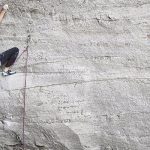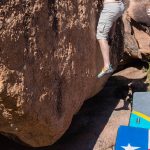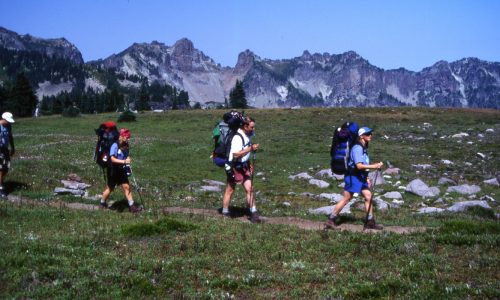Home » Gear Reviews » Climbing » Crash Pads » Camp Cassin Domino Pad
Camp Cassin Domino Pad Review
June 5, 2018
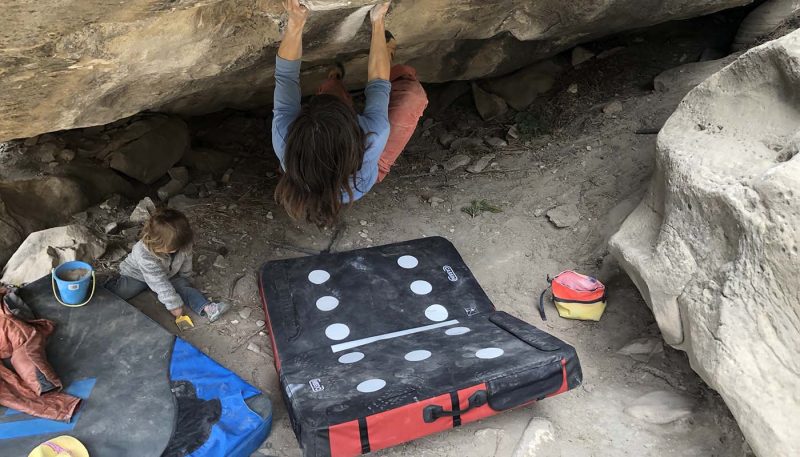
 Camp Domino
Camp Domino

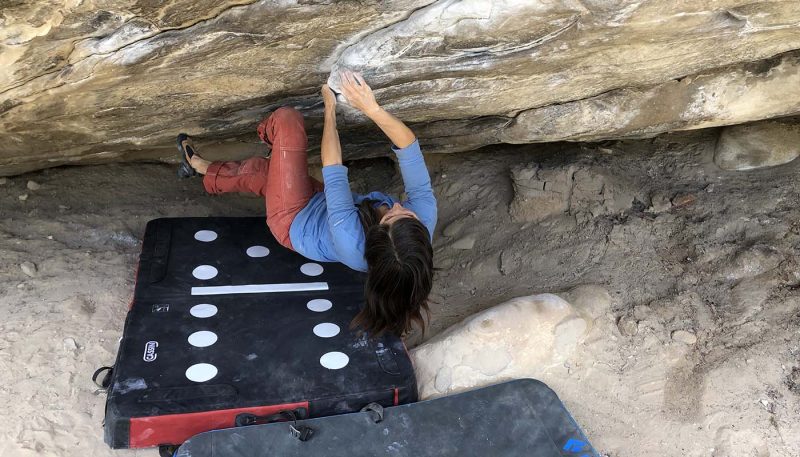







 88
88 The Good
- Balanced foam firmness & give
- Thick landing surface
- Reinforced wear points
- Converts to a sofa for lounging
The Bad
- Shoulder straps come unbuckled
- Heavy
- No sternum strap or waist belt
- No closure system for retaining smaller gear
- Closure straps obnoxiously long
Foam Quality
The Camp Cassin Domino was the thickest pad we tested in this review. Coming in at 5.5” thick, it boasts a healthy combination of five layers of both open and closed cell polyurethane and polyethylene foam. Every tester remarked at how well the Domino pad performed in both higher and lower distance falls. It was also noted that the Domino pad struck the perfect balance between firm and soft when it came to landing variability. There was never an issue of bottoming out regardless of the height of the fall. Testers never complained about the firmness of the foam or the need for a break in period. The only instance where the thickness of the foam was an issue was bouldering in the alpine scree fields of Rocky Mountain National Park or the Mount Evans bouldering areas. Testers found the foam to be too thick and too firm to squeeze into some of the tight spaces in order to protect the climber from back falls onto sharp rocks. Compared to all the other pads tested, the foam combination in the Camp Cassin Domino pad excelled in our testing.
Shell Durability
The Camp Cassin Domino pad uses a 1000 denier nylon for its shell, similar to most of the other pads we reviewed. In addition, Camp adds a heavy duty Hypalon material to the corners for increased durability. Testers found this to be a nice feature that all other pad companies overlooked. On the flip side of that, testers weren’t fond of the rounded corners of the Domino pad, leaving gaps between pads when they were married together in a grid. Besides the initial DWR finish on the nylon shell, there wasn’t any waterproofing or water resistance to the material to protect the foam or the climber from getting dirty or muddy in wet situations. This was somewhat of an issue in the wet spring of the Rocky Mountains. Nonetheless, during heavy use on sharp granite rocks, there was no significant or obvious wear to the shell after testing.
Functionality
The Camp Cassin Domino pad was well liked among our testers because they found it to be very functional. Every tester seemed, at one time or another, eager to test out the sofa lounge feature of the Domino pad. This was something that only one other pad company has integrated into the design of their pads. Our testers found it to be perfect for lunch time until the pad was wrestled away to start climbing again. The shoulder straps acted as a multifunctional unit to carry the pad as a backpack, or over the shoulder like a messenger bag or suitcase for ease of transporting from one boulder to another. This was a feature that our testers did not like to use because of the time and effort required to switch this back and forth. The hybrid hinge design made it easy to pack the Domino pad in the back of your car because it laid flat when there was no gear inside. It also eliminated the dead spot in the center, despite not having a continuous sheet of foam across the landing surface. The Domino pad has the unique feature of velcro attachments to make this into a modular pad with one solid landing platform. However, it only worked well with other Domino pads which is unlikely amongst various individuals climbing together. Regardless, it was a great idea.
Carrying System
The carrying system for the Camp Cassin Domino pad was the least favorite feature of the pad according to our testers. Despite being padded, testers remarked that the shoulder straps were not as comfortable as other pads. It was noted that they were too thin, not contoured, and lacked a sternum strap for comfort and load distribution. In addition, testers complained that the shoulder strap buckles annoyingly kept coming undone from the pad. The Camp Cassin Domino pad also lacked a waist belt for distributing heavy loads to the hips. This didn’t matter as much if the loads were light, but carrying a heavier load over a longer distance in the backcountry, it made a difference compared with other pads to have a waist belt. With the thick foam of the Domino pad, testers found it difficult to get a full backpack packed inside, especially without creating a big gap for smaller gear to fall out. The lack of any closure flap like the Metolius Session or the Black Diamond Drop Zone made carrying loose gear in the Domino pad impossible. In fact, the only closure system for holding gear inside was four webbing straps on the sides and bottom, similar to the Organic Simple pad. One tester also commented that the webbing straps for the closure system were obnoxiously long.
Maneuverability
It should be no surprise that the Camp Cassin Domino, which is the biggest pad we reviewed, is also the heaviest pad weighing in at roughly 14 pounds. Two grab handles on the sides make it slightly easier to maneuver around the base of boulders. Most testers wished for a third grab handle for better maneuverability. However, the Domino’s larger landing surface combined with its thicker foam, make it much more of a bear to move quickly while spotting. One unique feature of the Domino pad testers liked was the velcro attachment points. They’re used to pair up multiple Domino pads to create a solid landing platform. It’s a fantastic idea if everybody has a Domino pad, otherwise, worthless.
David Garcia has been a trail running fanatic with a climbing problem for over 25 years. David works as a firefighter in his home base of Boulder, Colorado where he has easy access to some of the best trail running and climbing that the state has the offer. David tests trail shoes and bouldering crash pads for Gear Institute.










